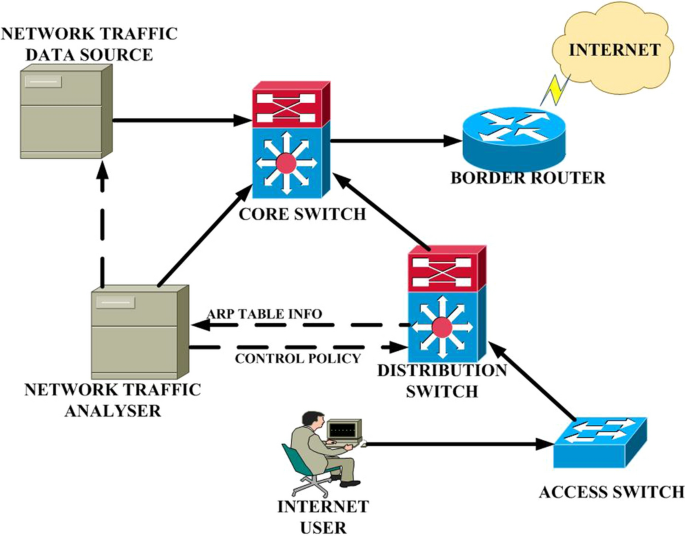Wanna know how to remove P2P traffic? Peer-to-peer (P2P) is a file sharing application like BitTorrent, and iMesh that has long been contested for originality and academic networks. While some operators rely completely on P2P for authentic reasons—such as issuing open-source software or big datasets—some people use it as an unofficial content distributor. The result: unwarranted and way too much bandwidth depletion, legal coverage, and security dangers.
Taking care of P2P traffic requires more than a simple “no P2P” policy. This guide outlines a structured approach combining user education, layered technical controls, and ongoing traffic monitoring.
Table of Contents
1. Why Policy Alone Isn’t Enough
Introducing a P2P policy is essential, but it won’t stop traffic overnight. Many organizations mistakenly assume users will comply immediately. In reality, policies need visibility, reinforcement, and measurable enforcement.
Begin by publishing the policy on your internal site. Use login banners or pop-ups to remind users. This ensures everyone is aware—and on record—for having seen it.
Educate IT staff early. They should understand the rationale behind the policy, the risks of P2P use, and the enforcement strategy. Non-IT managers should also be briefed, especially if they’ll be involved in enforcement or exception approvals.
When questions or resistance arise, especially around legitimate high-bandwidth use (like video editing or research), have clear processes in place for exceptions. Document all approvals.
Before enforcing the policy, monitor baseline traffic for comparison. After implementation, track changes and report violations. Start with user education, then involve supervisors, and finally consider administrative action for repeat offenders.
2. Identifying and Analyzing P2P Traffic
Start with passive detection tools. Scanning some network functions like Nmap or NmapNT can detect active ports connected with P2P apps—KaZaA usually uses port 1214, while iMesh might travel across different ports to prevent detection. Keep in mind to match up scans with your security team to prevent activating of alarms.
To analyze traffic patterns, use protocol analyzers like Sniffer Pro. These tools allow filtering based on IP, port, or application signature. Ideally, capture data at the core switch or key network segments to avoid missing dispersed activity.
Look for suspicious file types being shared—clusters of .mp3, .avi, or .exe files may point to unauthorized P2P use.
3. Blocking and Limiting P2P Traffic
Blocking P2P traffic at the firewall is a starting point. Firewalls like Cisco PIX, can block any recognized P2P ports using right to use lists. Nevertheless, numerous P2P curriculums avoid port-based rules by substituting to permissible ports (like 80 or 443).
now how to remove P2P traffic? Any identified P2P-related IP addresses can also be blocked, but it might take a lot or work of people i.e. “done by hand” type of work and a lot of times in vain due to ever-changing IPs and continuously changing P2P networks.
In place where it is used in great quantity or frequency like dorms or far-flung offices, consider dividing the network and using sterner bandwidth rules locally.
4. Implementing Bandwidth Controls
When outright blocking fails, bandwidth quotas can curb excessive usage. Universities like NDSU and UT Austin instrument day-to-day bandwidth restrictions for student operators, cautionary or regulating connections when thresholds are exceeded.
Some officialdoms use time-based guidelines—permitting unobstructed bandwidth during off-peak hours (e.g., 2 AM to 6 AM)—to decrease influence on critical business traffic.
However, quota systems have downsides. They assume all high usage is inappropriate, which isn’t always true. Users performing large backups or data analysis may exceed quotas through legitimate means.
Relatively than bounds by operators, QoS highlights traffic based on code of behavior. Tools like Cisco NBAR or Packeteer PacketShaper give once-over packs at an unfathomable level, permitting admins to deprioritize P2P traffic while conserving bandwidth for business-critical applications. Although QoS piece of equipment can be expensive and require proficiency, the ROI comes from condensed network crowding and lesser WAN costs.
5. Locking Down the Desktop
A greatly operative avoidance technique is to confine software installation at the desktop level. Operating systems like Windows 2000 and XP let admins to put on group rules that avert users from installing unconstitutional curriculums.
For enterprise settings, schemes like Zenworks or Intel LANDesk propose integrated administration, permitting desktop lockdown, application whitelisting, and software catalogue.
If P2P software is already installed, use login scripts or administrative share scans to detect known executables or registry entries. These tools can flag common P2P clients across the network. Once recognized, IT can in the least get rid of or restrict the software, or notify operators directly.
Moreover, scanning for telltale folder kinds on shared folders—such as mass media documentations—can deliver as a confirmation of exploitation. Consistent audits should be programmed, and logs kept to identify repeat offenders.
6. Ongoing Monitoring and Maintenance
P2P applications evolve quickly to avoid detection. Regular updates to your monitoring and filtering systems are necessary. Make use of active directory, IDS/IPS tools, and traffic analyzers to stay ahead of new variants.
User training should also continue—especially with new hires or seasonal students. Keep communication open about what’s allowed, why it matters, and what the consequences are.
Conclusion
To know how to remove P2P traffic needs a well-adjusted method. Begin with a clear strategy and education drive, then instrument layered technical panels—from port blocking and QoS to desktop lockdown. Detect traffic continuous and enhance your tactic as expertise and operator performance alter.
By merging passive discovery, hands-on communication, and robust execution, administrations can meaningfully reduce the danger and effect of unauthorized P2P activity.
And this is how to remove P2P traffic.




Pingback: How to Remove Motor Oil Stains from Clothes (Backed by 40+ Tips) - How to Remove